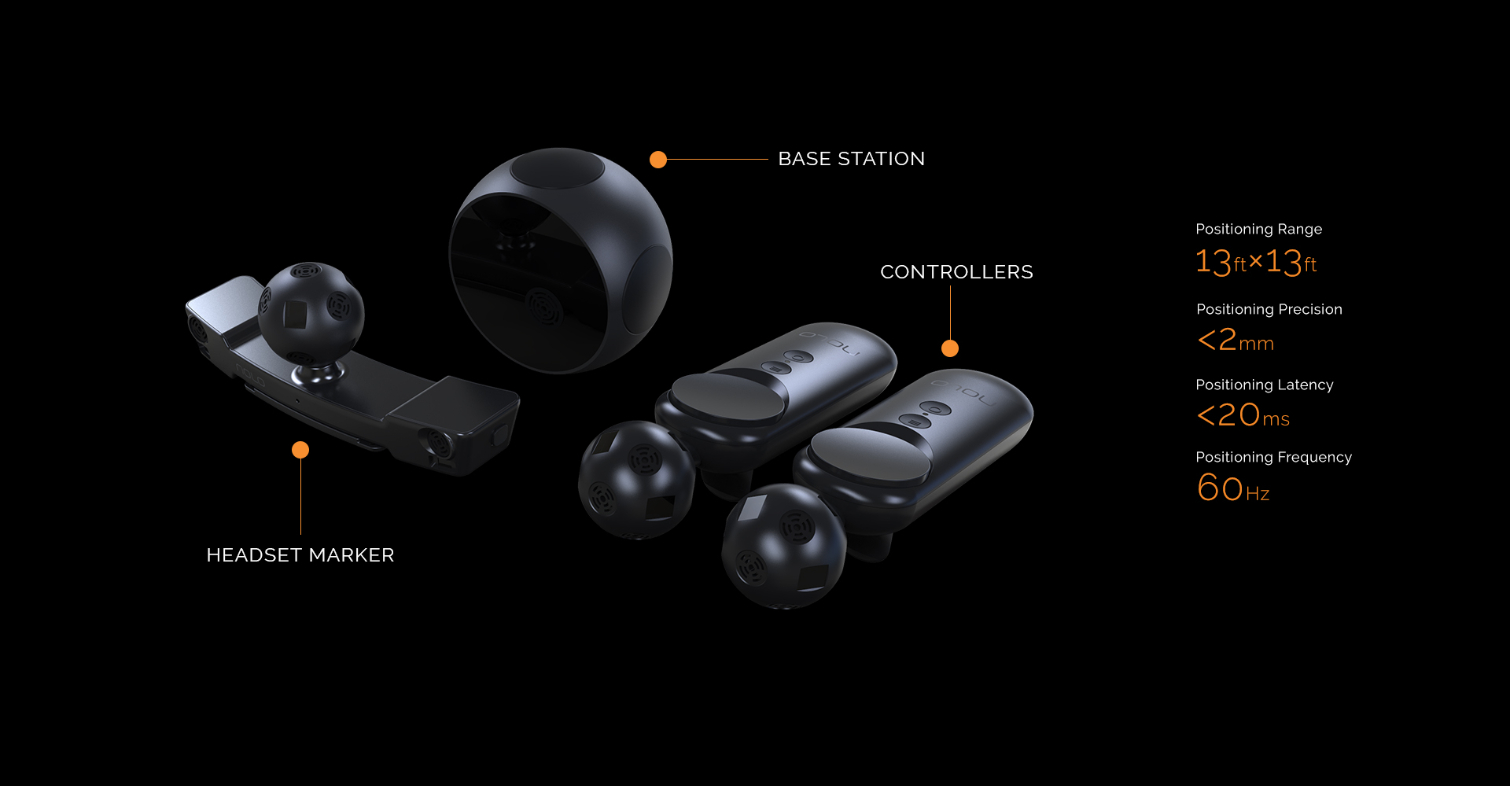Nolo 6DoF Mobile VR Tracking System Reaches Crowdfunding Goal Within Hours
There appears to be a lot of demand for a low-cost six degrees of freedom (6DoF) tracking system with hand controllers for budget VR. Who knew?
LYRobotix launched a Kickstarter campaign seeking $50,000 to help bring the Nolo VR tracking system for mobile VR headsets to market. The company met this goal within hours, proving there’s high-demand for spatial tracking for budget mobile VR.
The Nolo VR system offers 6DoF motion tracking and includes a single tracking base station, a headset marker, and two tracked hand wand controllers. The headset marker attaches to the top of your HMD and features a ball with tracking sensors on it. You’ll find similar tracking balls on the top of each controller.
Nolo VR’s tracking system offers sub-2mm tracking and less than 20ms of latency. The sensors also offer up to 13 x 13ft of tracked volume, which is ample space for room-scale gaming. You can tether the tracking system to your computer via USB to enable input to your PC. With the help of third-party software, such as Riftcat, you can stream Steam games to your mobile device. Of course, Nolo VR also works with your mobile VR system without a PC, too.
Nolo VR said the Nolo tracking system works with a variety of mobile VR headsets. Nolo VR is compatible with Cardboard headsets (with a head strap) and the various generic Android VR headsets, such as the Carl Zeiss VR One or Homido VR HMDs. The Nolo VR also works with the Samsung Gear VR and Google’s Daydream headsets.
The Nolo VR Kickstarter campaign far exceeded the company’s targets, and it’s been live for only a day. So far, LYRobotix secured 567 backers for a total of $75,677 in funding. The campaign still has 38 days to go, so there’s ample time to jump in. LYRobotix asks $99 for each kit.
Get Tom's Hardware's best news and in-depth reviews, straight to your inbox.
Kevin Carbotte is a contributing writer for Tom's Hardware who primarily covers VR and AR hardware. He has been writing for us for more than four years.
-
bit_user I wonder what tech they're using. At that range & precision, it's safe to say it's not a camera. It'd have to be something like 16k by 16k to cover 13' x 13' at ~2 mm.Reply
So, I assume it's something like Vive's method? I'd be concerned about them getting sued for patent infringement.
With only one basestation, you're also going to have to remain facing it, like with PSVR. So, it's not a Vive-level room scale solution.
There are enough challenges that I fear early adopters are in for some disappointment. Hopefully, it works well enough for them to make a second gen.


